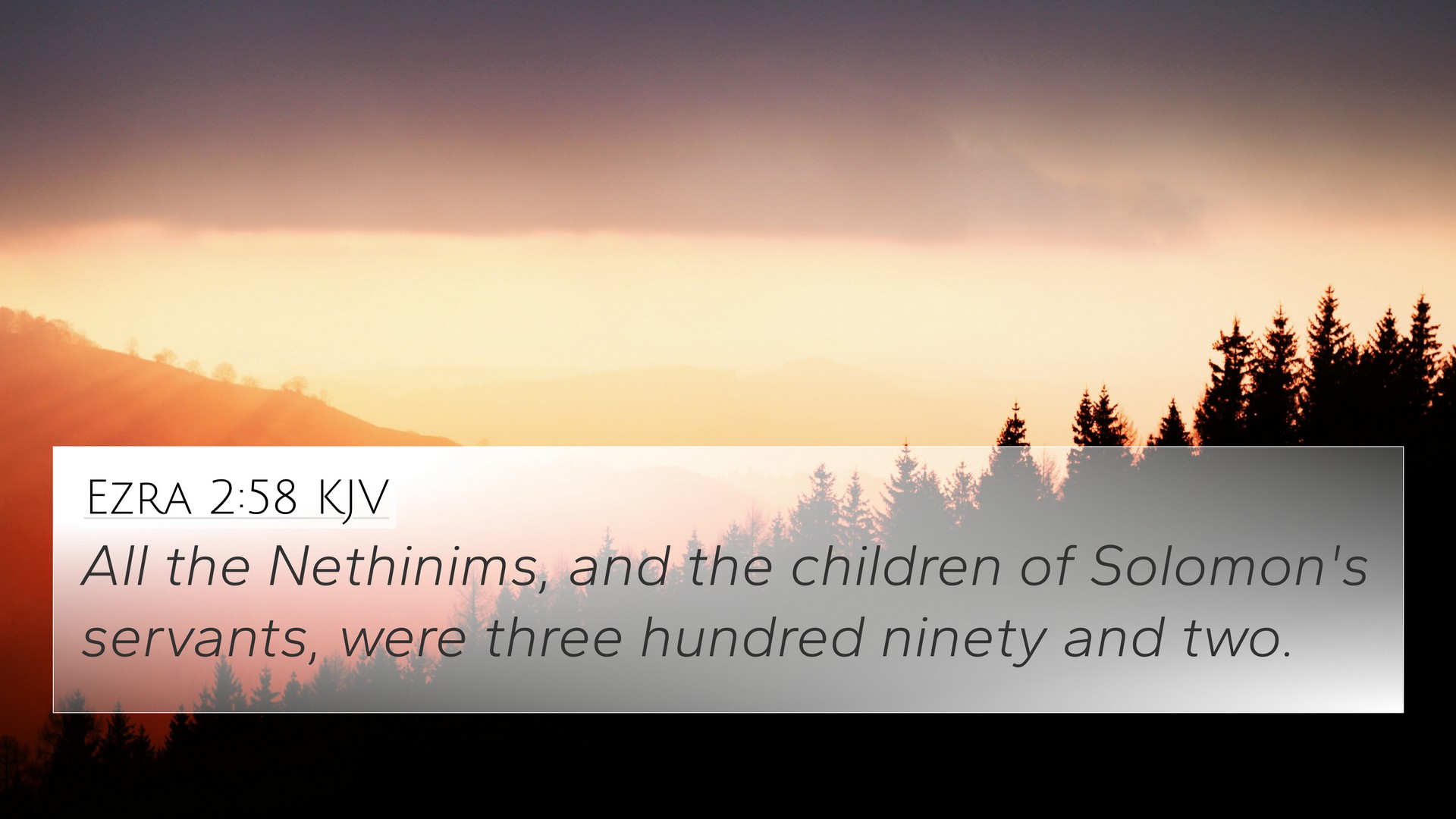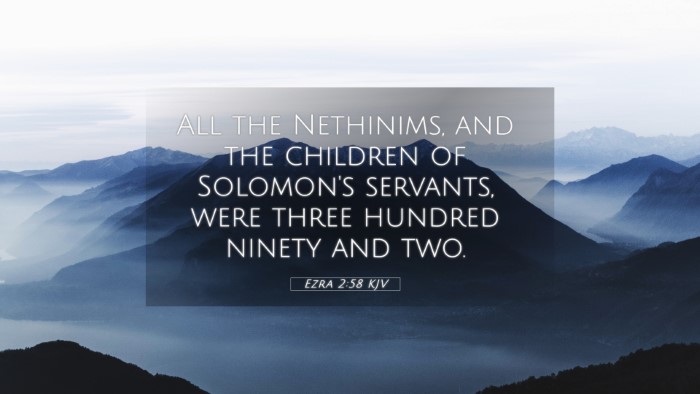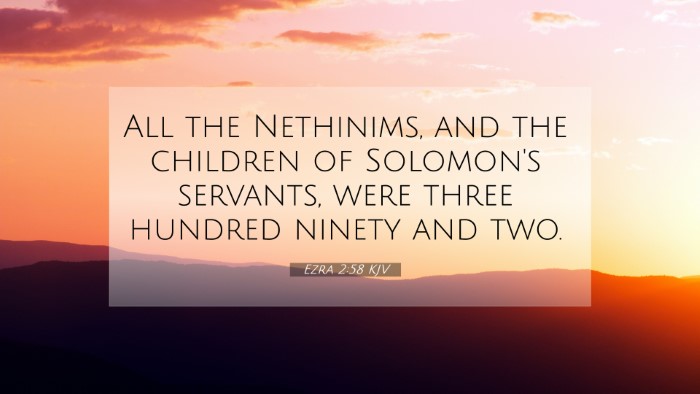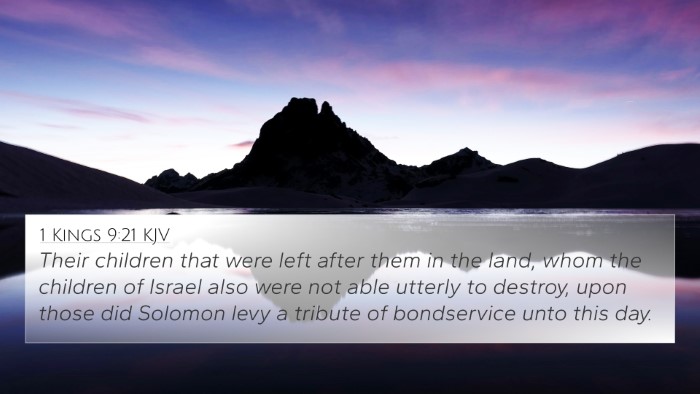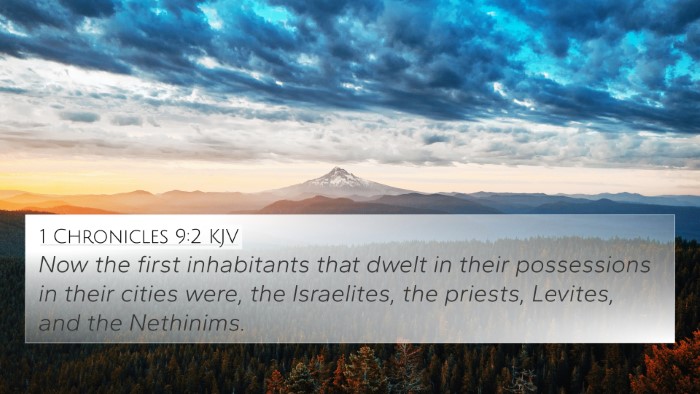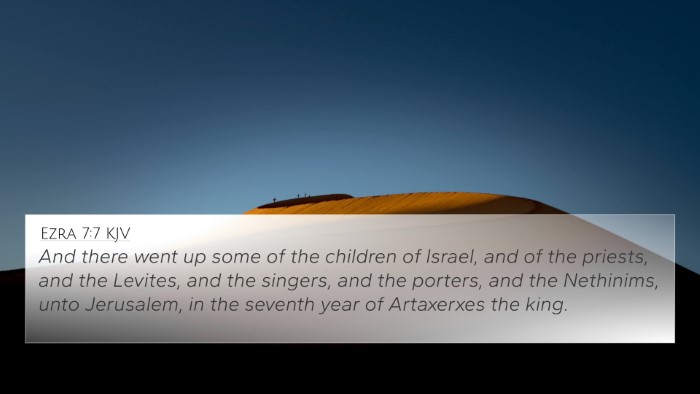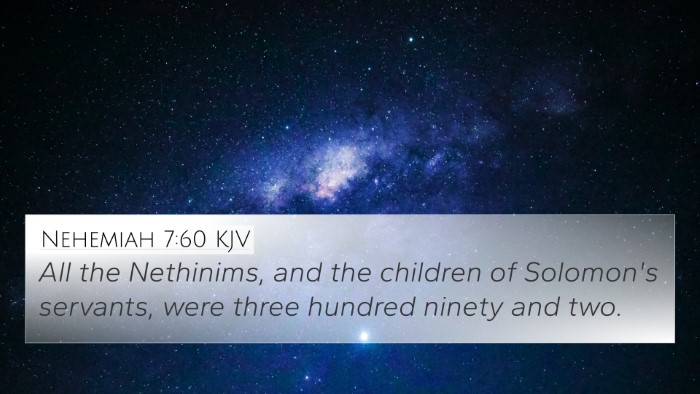Understanding Ezra 2:58
Ezra 2:58 states, "All the Nethinim, and the children of Solomon's servants, were three hundred ninety and two." This verse lists a specific group of people who returned from their Babylonian exile, emphasizing their role within the community as helper servants and laborers in the temple and surrounding areas. Below, we explore the significance and meaning of this verse through insights from various public domain commentaries.
Commentary Insights
This passage is crucial for understanding the social structure of the returning exiles. The Nethinim were dedicated temple servants, originally assigned to assist the Levites in various tasks. Here are insights from notable commentators:
- Matthew Henry: He highlights the importance of counting and knowing who returned, as it demonstrates God’s faithfulness. Henry points out that the Nethinim’s presence indicates that while some individuals may have been captured or lost, others remained committed to the service of God.
- Albert Barnes: Barnes explains that this particular enumeration also validates the continuity of worship practices and temple service. The return of Nethinim signifies a restoring of order within the community and their vital role in maintaining worship.
- Adam Clarke: He notes that the references to the "children of Solomon's servants" point to the historical depth of the returning community, acknowledging their lineage to previous servants of the temple. Clarke tries to connect the Nethinim's labor to the ongoing need for temple service and how their ancestry enriches this role.
Bible Verse Cross-References
Ezra 2:58 connects to several other verses highlighting themes of servitude, community, and restoration. Below are some significant cross-references:
- Joshua 9:27: This verse describes the Gibeonites becoming woodcutters and water carriers for the congregation.
- 1 Chronicles 9:2: This passage mentions the Nethinim and their designated roles among the people of Israel.
- Ezra 8:20: This verse also discusses the Nethinim as essential helpers sent to assist in temple worship.
- Nehemiah 7:60: It reaffirms the number of Nethinim and Solomon's servants, linking their numbers directly to the returning exiles.
- 1 Kings 10:21: Solomon's great wealth and organization of work provide context on why these servants were essential.
- Acts 6:1: This passage illustrates the necessity of service roles within the early Christian community, mirroring the historical roles of the Nethinim.
- Revelation 7:9: A vision of diverse people serving before God reflects the fulfillment of what the Nethinim symbolized in their community.
Thematic Connections
In addition to the direct cross-references, Ezra 2:58 can be seen within broader themes in Scripture. Some themes include:
- Service to God: The role of the Nethinim reflects the essential concept of servitude in various religious contexts.
- Community Restoration: Their return marked a healing process for a nation that had suffered loss and was seeking re-establishment of worship.
- Identity and Heritage: Recognizing one's lineage emphasizes the importance of heritage in forming community identity.
Using Cross-References for Deeper Understanding
For those interested in exploring the links between Biblical texts, employing cross-referencing is an invaluable method. Here are some tools and methods for effective cross-referencing:
- Bible Concordance: A reference tool that helps locate verses by keywords, aiding in finding cross-references.
- Bible Cross-Reference Guide: Many editions of the Bible come with built-in cross-references that highlight related scriptures.
- Cross-Reference Bible Study: Engaging in group studies can help facilitate discussions about connections between scriptures.
- Bible Reference Resources: Various online and print resources provide extensive details on scriptural relationships.
Conclusion
Ezra 2:58 serves as a reminder of the structure within God’s people and their collective identity after exile. The Nethinim and Solomon's servants symbolize the importance of service, heritage, and community restoration. Through cross-referencing, one can build a deeper understanding of the spiritual themes present in this verse, creating an intricate web of Biblical insights.
Utilizing cross-referencing techniques not only empowers individual Bible study but also enriches communal theological explorations, fostering a fuller understanding of scriptural narratives.
